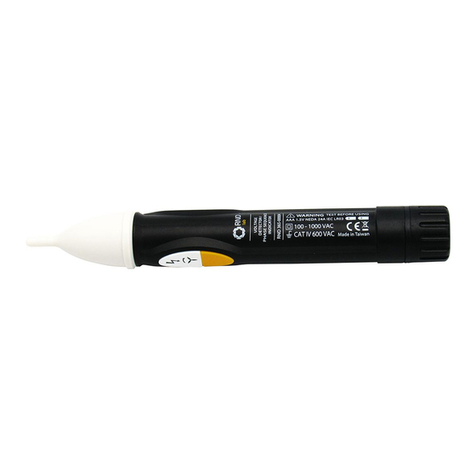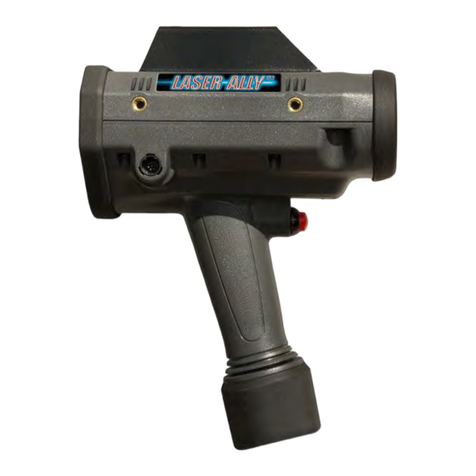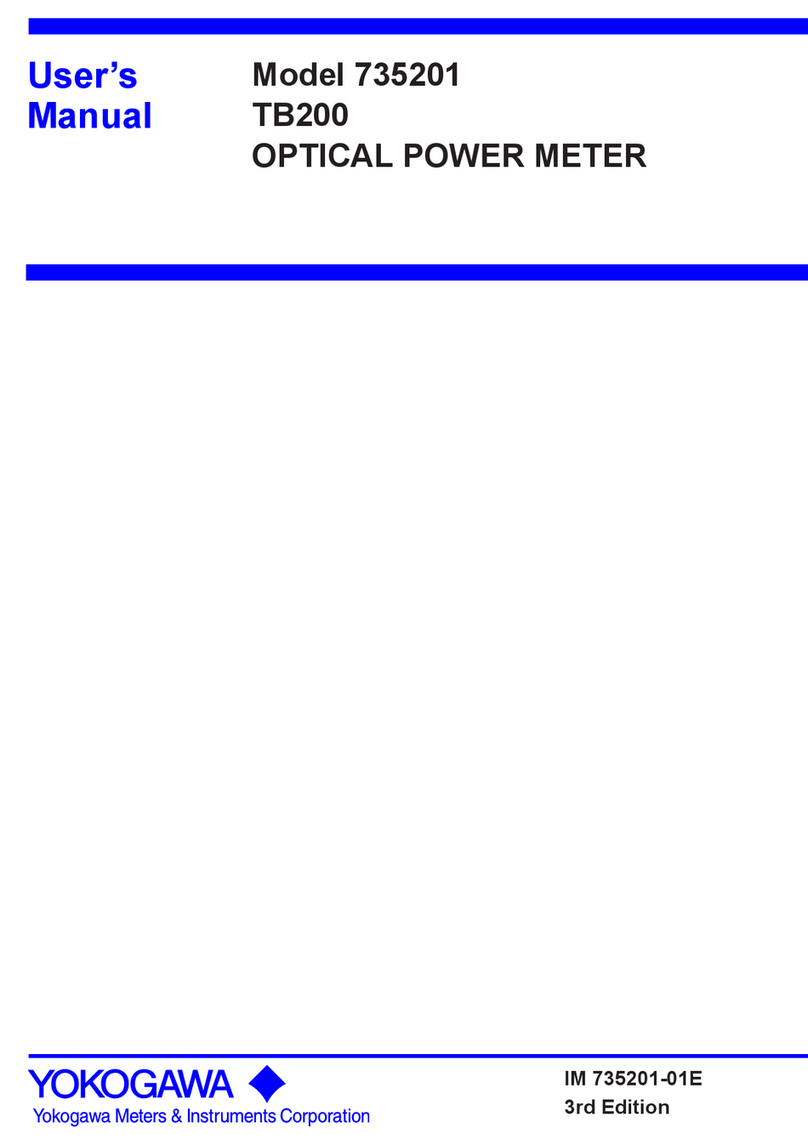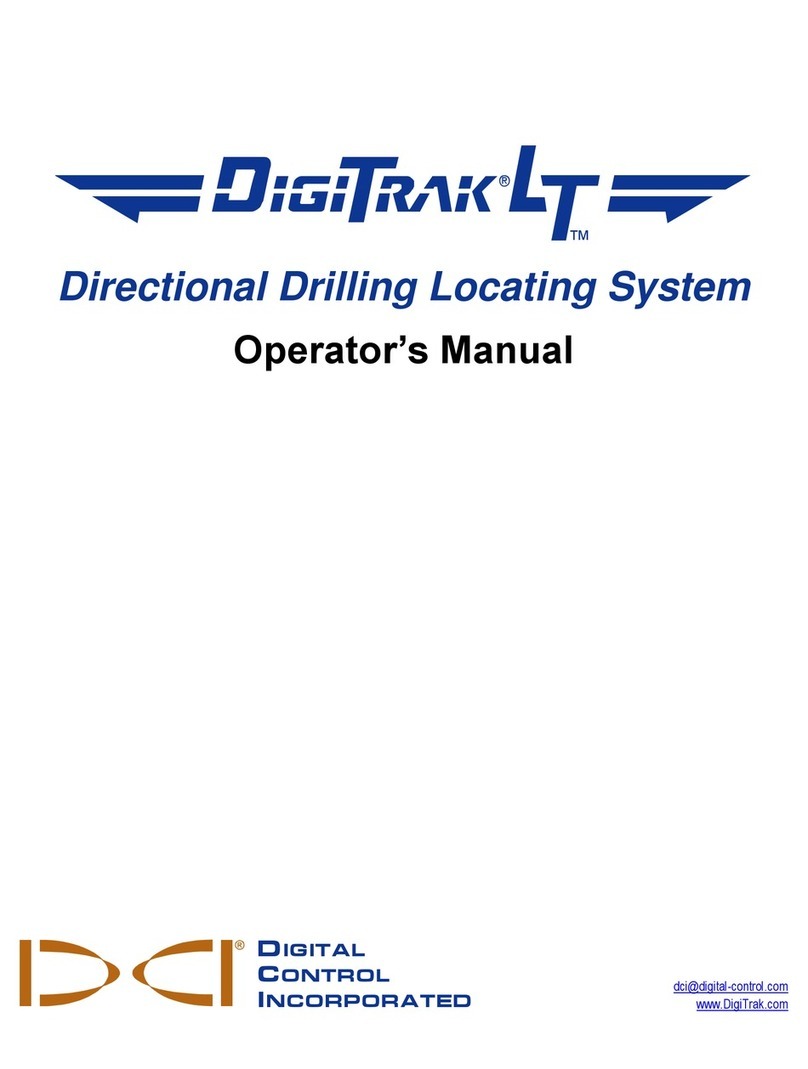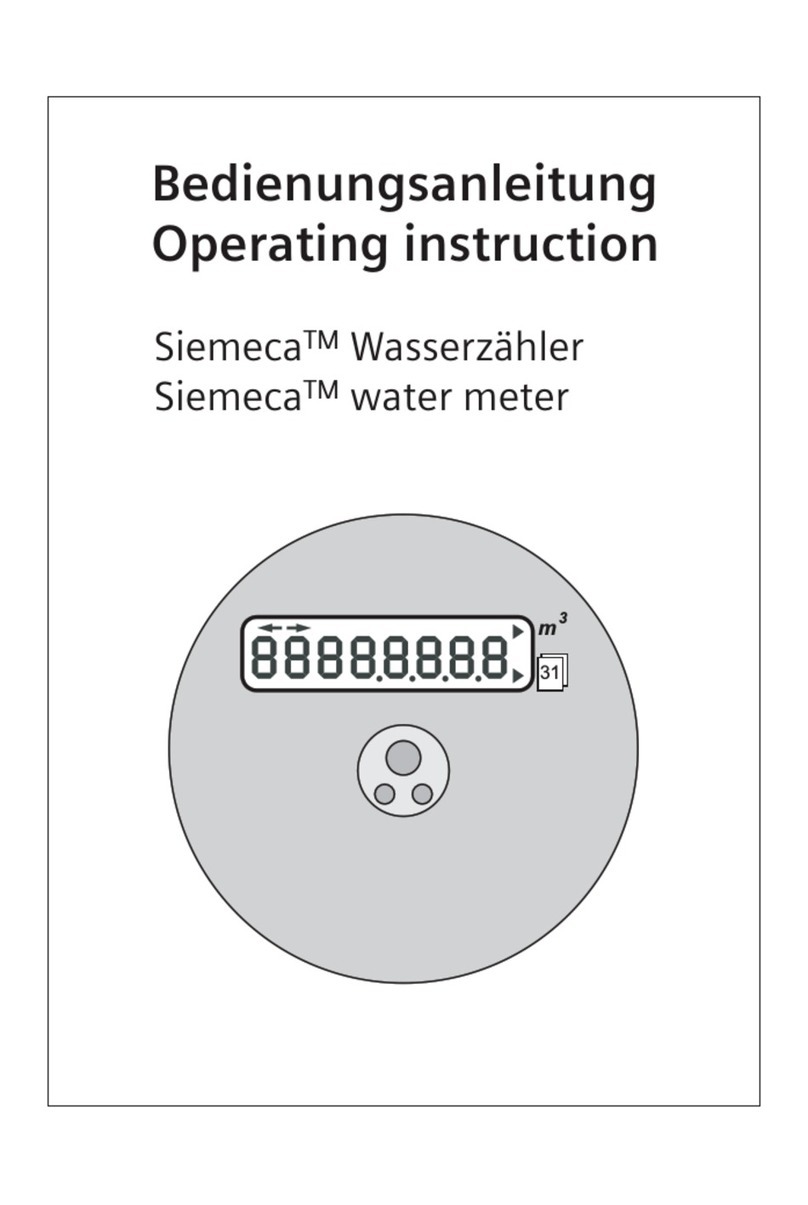RND 365-00002 User manual

USER MANUAL – BEDIENUNGSANLEITUNG – ANVÄNDARMANUAL
RND 365-00002
LCR Meter | EN p2
LCR Messgerät | DE p19
LCR Mätare | SE p36

2
English
Read First
Safety Informaon
Understand and follow operang instrucons carefully. Use the meter only as specied
in this manual; otherwise, the protecon provided by the meter may be impaired.
WARNING
Idenes hazardous condions and acons that could cause BODILY HARM or DEATH.
CAUTION
Idenes condions and acons that could DAMAGE the meter or equipment under test
WARNING
• When using test leads, keep your ngers behind the nger guards.
• Always use proper test probes for measurements.
• Discharge all high-voltage capacitors before tesng.
• Do not use meter around explosive gas or vapor.
• To reduce the risk of re or electric shock do not expose this product to rain or moisture.
• Do not touch any circuits or parts of circuits if there may be 30VAC rms or 30 VDC on
them.
• Be careful of the test probes, which are sharp and dangerous.
• Never connect a source of voltage to the meter. That may be damage the meter.
• Discharge all capacitors before tesng.
• Do not expose meter to extremes in temperature or high humidity.
• Do not drop the meter. That maybe damage the meter or cause out of specicaon.
• Never use unspecied adaptor to charge meter.
• Do not connue to charge more than 8 hours to prevent the baery damage.

3
Symbols as marked on the Meter
and Instruction manual
Risk of electric shock
See instrucon manual
DC measurement
Equipment protected by double or reinforced insulaon
Baery
Fuse
Earth
AC measurement
Conforms to EU direcves
Do not discard this product or throw away.
Maintenance
Do not aempt to repair this Meter. It contains no userserviceable parts. Repair or servicing
should only be performed by qualied personnel.
Cleaning
Periodically wipe the case with a dry cloth and detergent. Do not use abrasives or solvents.

4
Introduction
The Meter Description
Front Panel Illustraon
1. Test probes
2. Push buons for features
3. LCD display: 20,000 counts
4. Mini USB plug for charge & connect to PC
1
2
3
4

5
Assembly
1. USB cable
2. AC adaptor (Opon)
3. L Type Test probes & special screws x 4 (Opon)
4. Soware CD (Opon)
1 2
3 4

6
Measuring Principle
Series Measuring

7
Parallel Measuring
Phase Drawing
The phasor is a constant complex number, usually expressed in exponenal form,
represenng the complex amplitude (magnitude and phase) of a sinusoidal funcon of me.
When θ (phase) > 0°
Then Z (impedance) is
Capacive reactance
When θ (phase) < 0°
Then Z (impedance) is
Inducve reactance
When θ (phase) = 0°
Then Z (impedance)
is Resistance

8
Making Basic Measurements
Discharge the DUT (Device Under Test) before connecng the test probes.
The gures on the following pages show how to make basic measurements.
Power On/O
Press the central power buon to turn on. Press and hold the power
buon > 2 sec to turn o.
Auto Power O
If there is no any acon in the meter, then the meter will
automacally turn o to save the power of baery. The default
APO me is 10 minutes.
Backlight
When the meter is turned on, the backlight will be turned on
automacally. Press the central power buon to turn on/o the
backlight.
Preparaon and Cauon Before Measurement
Observe the rules of Warnings and Cauons

9
Measuring L/C/R
Measuring D/Q/θ/DCR
Discharge the DUT (Device Under Test) before connecng the test probes.
The gures on the following pages show how to make basic measurements.
The auto test mode is the default mode when the meter is turned on. When the
meter in auto test mode, it will automacally detect the DUT and show the suitable
result on the dis play.
The meter can measure D (dissipaon factor), Q (quality factor), θ (phase) and
DCR (DC resistance) on the DUT.
• Press the D/Q/θ/DCR buon to enter D/Q/θ/DCR test mode.
• In D/Q/θ/DCR test mode, press the D/Q/θ/DCR buon to select measuring funcon.
• In auto test mode, press the AUTO L/C/R buon to enter manual test mode.
• In manual test mode, press the AUTO L/C/R buon to select measuring funcon.
• To return the auto test mode, press and hold the AUTO L/C/R buon > 2 sec.

10
Select Test Frequency
Open/Short Calibration
The default test frequency is 1kHz when the meter is turned on.
Press the Cal/Hz buon to select the test frequency.
In order to achieve the best measuring result, the calibraon has to be done
before measuring the DUT. To calibrate the meter, press and hold the Cal/Hz buon > 2 sec.
When “OPEn” appears on the display, make the test probes open, and press the Cal/
Hz buon to start open calibraon. During open calibraon, the “OPEn” blinks on
the display. About 15 seconds later, the result of the open calibraon appears on the
display. If the result shows "PASS", press the Cal/Hz buon to next step. If the result
shows "FAIL", press the Cal/Hz buon to exit calibraon mode.

11
When “Srt” appears on the display, make the test probes short closely, and press
the Cal/Hz buon to start short calibraon. During short calibraon, the “Srt” blinks on t
he display. About 15 seconds later, the result of the short calibraon appears on the
display. If the result shows "PASS", press the Cal/Hz buon to nish calibraon. If the result
shows "FAIL", press the Cal/Hz buon to exit calibraon mode.

12
Relative Δ
Hold
Press and hold the Δ/H buon > 2 sec to start the relave mode. The meter stores the last
reading as reference and shows the indicaon “Δ” on the display. In this mode, the meter
deducts the reference from each reading, and shows the result on the display. If the result is
negave, the “Er” appears on the display. Press the Δ/H buon > 2 sec to exit this mode.
Press the Δ/H buon to enter the hold mode. The meter holds the last reading and shows the
indicaon “H” on the display. Press the Δ/H buon again to exit the hold mode.

13
Charge
Connect to PC
There is a Li-ion baery as power source in the meter. When the baery indicator shows low
baery, charge the meter as soon as possible. When baery charge complete, the baery
indicator will show full level on the display.
• Always use the typical mini USB plug adaptor to charge.
• Do not connue to charge more than 8 hours to prevent the baery damage.
The meter can connect to PC by USB cable. Follow the below steps to setup.
1. Connect PC and meter by USB cable.
2. Turn on the meter power.
3. Insert the soware CD to CD-ROM of PC.
4. Install the driver and soware.
5. Start the soware and communicate with meter.

14
General Specications
Display : 20,000 counts
Polarity Indicaon : Automac, posive implied, negave indicated.
Over Range Indicaon : OL
Measuring Rate : 2.5 samples per second
Internal Power Requirements : 3.7V / 400mAh Li-ion Baery
External Power Requirements : USB plug or AC Adapter
Baery Life : 20 hours typical (no backlight)
Baery Charge Cycle : 2 hours typical
Low Baery Voltage : 3.8V
Auto Power O : Default 10 minutes.
Operang Ambient :
0°C to 30°C (< 85% RH),
30°C to 40°C (< 75% RH),
40°C to 45°C (< 45% RH)
Storage Temperature : -20°C to 60°C, 0% RH to 80% RH (baeries not
ed)
Temperature Coecient : 0.1 x (Specied Accuracy) / °C,
< 18°C or > 28°C
Operang Altude : 6561.7 (2000m)
Calibraon Cycle : 1 me per year
Weight : 70g
Dimensions (H x W x L) : 23 x 38 x 168 (mm)
EMC : EN 61326-1, EN 61326-2, EN 61000-4
Polluon Degree : 2
Shock Vibraon : MIL-PRF-28800F for a
class 2 instrument Indoor Use.

15
Electrical Specications
Test Frequency
Test Signal
Accuracy is ± (% of reading + LSD)
Ambient temperature: 23°C ± 5°C (< 80% RH)
When measuring by basic accuracy that following condions must be met:
• Ambient temperature: 23°C ± 5°C (< 80% RH)
• Open and short calibraon have been performed.
• D ≤ 0.1 for C, L measurements; Q ≤ 0.1 for R
measurements.
• Do not measure when charge by AC adaptor. It may
cause the reading rolling.
• See the operaon manual for addional condions.
AC Signal Level: 600mVrms
AC Signal Accuracy: ± 20%
DC Bias Level: 800mV
DC Bias Accuracy: ± 10%
Model Frequency Accuracy
RND 365-00002 100Hz ± 0.2%
RND 365-00002 120Hz ± 0.2%
RND 365-00002 1kHz ± 0.2%
RND 365-00002 10kHz ± 0.2%

16
General Specications
Inductance
D & Q
θ
Denion: Q = 1/D = tanθ
Range: 2.000 to 2000
Minimum Resoluon: 0.001
Accuracy: ± (0.5% + 5) x (1+D), when D < 1 or Q > 1
Definition: θ = tan-1Q
Range: -90.0° to 90.0°
Minimum Resolution: 0.1°
Accuracy: ± (0.5% + 5)
Range 100Hz 1kHz 10kHz
120Hz
20.000uH N/A N/A N/A
200.00uH N/A N/A 0.5% + 30 [1]
2000.0uH N/A 0.5% + 30 [1] 0.5% + 5
20.000mH 0.5% + 30 [1] 0.5% + 5 0.5% + 5
200.00mH 0.5% + 5 0.5% + 5 0.5% + 5
2000.0mH 0.5% + 5 0.5% + 5 1.0% + 5 [2]
[1] Accuracy is specied aer subtract of the oset inductance.
[2] < 50dgt rolling.
[3] If D > 0.1, the accuracy should be mulplied by 1 + D2

17
Capacitance
Range 100Hz 1kHz 10kHz
120Hz
200.00pF N/A N/A 2.0% + 1pF [1]
2000.0pF 0.5% + 8 [1] 0.5% + 8 [1] 0.5% + 8 [1]
20.000nF 0.5% + 5 0.5% + 5 0.5% + 5
200.00nF 0.5% + 5 0.5% + 5 0.5% + 5
2000.0nF 0.5% + 5 0.5% + 5 1.0% + 5
20.000uF 0.5% + 5 1.0% + 5 N/A
200.00uF 1.0% + 5 N/A N/A
[1] Accuracy is specied aer subtract of the stray capacitances for test leads.
[2] < 50dgt rolling.
[3] If D > 0.1, the accuracy should be mulplied by 1 + D2
Resistance
Range 100Hz 1kHz 10kHz
120Hz
20.000Ω N/A 0.5% + 50 [1] 0.5% + 50 [1]
200.00Ω 0.5% + 8 [1] 0.5% + 8 [1] 0.5% + 8 [1]
2.0000kΩ 0.5% + 5 0.5% + 5 0.5% + 5
20.000kΩ 0.5% + 5 0.5% + 5 0.5% + 5
200.00kΩ 0.5% + 5 0.5% + 5 1.0% + 5 [2]
2.0000MΩ 0.5% + 5 1.0% + 5 [2] N/A
20.000MΩ 1.0% + 5 [2] N/A N/A
[1] Accuracy is specied aer subtract of the oset resistance.
[2] < 50dgt rolling.
[3] If Q > 0.1, the accuracy should be mulplied by 1 + Q2

18
DC Resistance
The proprietary informaon in this manual is protected by copyrights. Any photocopies, reproducons
or translaon to another language are not allowed unless it is permied. And all rights are reserved.
The informaon in this manual is corre ct when prinng. However, RND will connuously improve products
and reserve the rights to change specicaons, equipment, and maintenance procedures at any me
without noce.
Range Resoluon Accuracy
200.00Ω 10mΩ 0.5% + 8 [1]
2.0000kΩ 100mΩ 0.5% + 5
20.000kΩ 1Ω 0.5% + 5
200.00kΩ 10Ω 0.5% + 5
2.0000MΩ 100Ω 0.5% + 5
20.000MΩ 1kΩ 1.0% + 5
200.00MΩ 10kΩ 2.0% + 5 [2]
[1] Accuracy is specied aer subtract of the oset resistance.
[2] < 50dgt rolling.

19
Deutsch
Lesen Sie zuerst die Sicherheitsinformationen
Sicherheitsinformaonen
Lesen und befolgen Sie die Bedienungsanleitung sorgfälg. Verwenden Sie das Messgerät
nur wie in dieser Anleitung angegeben. Andernfalls kann der Schutz durch das Messgerät
beeinträchgt werden.
WARNUNG
Die falsche Verwendung kann zu gefährlichen Zuständen und Handlungen führen, die
Körperverletzung oder Tod verursachen können.
ACHTUNG
Falsche Verwendungen und Handlungen könnten das Messgerät oder die zu prüfende
Ausrüstung beschädigen.
WARNUNG
• Wenn sie mit Messleitungen arbeiten, halten Sie die Finger hinter den Fingerschutz.
• Immer geeignete Messsonden für Messungen verwenden.
• Entladung sie alle Hochspannungskondensatoren vor dem testen.
• Verwenden das Messgerät nicht in Umgebungen wo es explosionsfähiges Gas oder Dampf
hat.
• Um das Risiko eines Brandes oder eines elektrischen Schlags zu verringern, setzen Sie
dieses Produkt nicht Regen oder Feuchgkeit aus.
• Schließen Sie keine Schaltkreise oder Teile von Schaltungen, wenn es 30VAC RMS oder 30
VDC an ihnen gibt.
• Vorsicht: Prüfspitzen können scharf und gefährlich sein.
• Niemals eine Spannungsquelle an das Messgerät anschließen. Dies könnte den Zähler
beschädigen.
• Entladen Sie alle Kondensatoren vor dem Testen.
• Setzen Sie das Messgerät nicht extremen Temperaturen oder hoher Lufeuchgkeit aus.
• Lassen Sie das Messgerät nicht fallen. Das beschädigt das Messgerät oder verursacht
Messungenauigkeiten.
• Benützen sie zum Laden des Messgerätes nur den spezischen Adapter.
• Laden sie das Gerät nicht länger als 8 Stunden auf, um Baerieschäden zu vermeiden.

20
Symbole auf dem Messgerät und
Bedienungsanleitung
Gefahr eines elektrischen Schlags
Siehe Bedienungsanleitung
DC-Messung
Ausrüstung, die durch doppelte oder verstärkte Isolierung geschützt ist
Baerie
Sicherung
Erde
AC-Messung
Entspricht den EU-Richtlinien
Verwerfen Sie dieses Produkt nicht oder werfen Sie weg.
VORSICHT
•Trennen Sie die Messleitungen von den Prüfpunkten, bevor Sie die Posion
des Funkonsdrehschalters ändern.
•Setzen Sie das Messgerät nicht extremen Temperaturen oder hoher Lufeuchgkeit aus.
•Niemals das Messgerät in Ω, , , ,mA, A einstellen
•Messen Sie nie die Spannung eines Stromversorgungskreises in Geräten, die zu einer
Beschädigung des Messgerätes und des zu prüfenden Gerätes führen können.
Instandhaltung
Versuchen Sie nicht, dieses Messgerät zu reparieren. Es enthält keine Teile welche durch
Laien ersetzt werden könnten. Reparatur oder Wartung dürfen nur von qualiziertem
Personal durchgeführt werden.
Reinigung
Das Gehäuse mit einem trockenen Tuch und Waschmiel regelmäßig abwischen.
Verwenden Sie keine Scheuermiel oder Lösungsmiel.
Table of contents
Languages:
Other RND Measuring Instrument manuals
Popular Measuring Instrument manuals by other brands
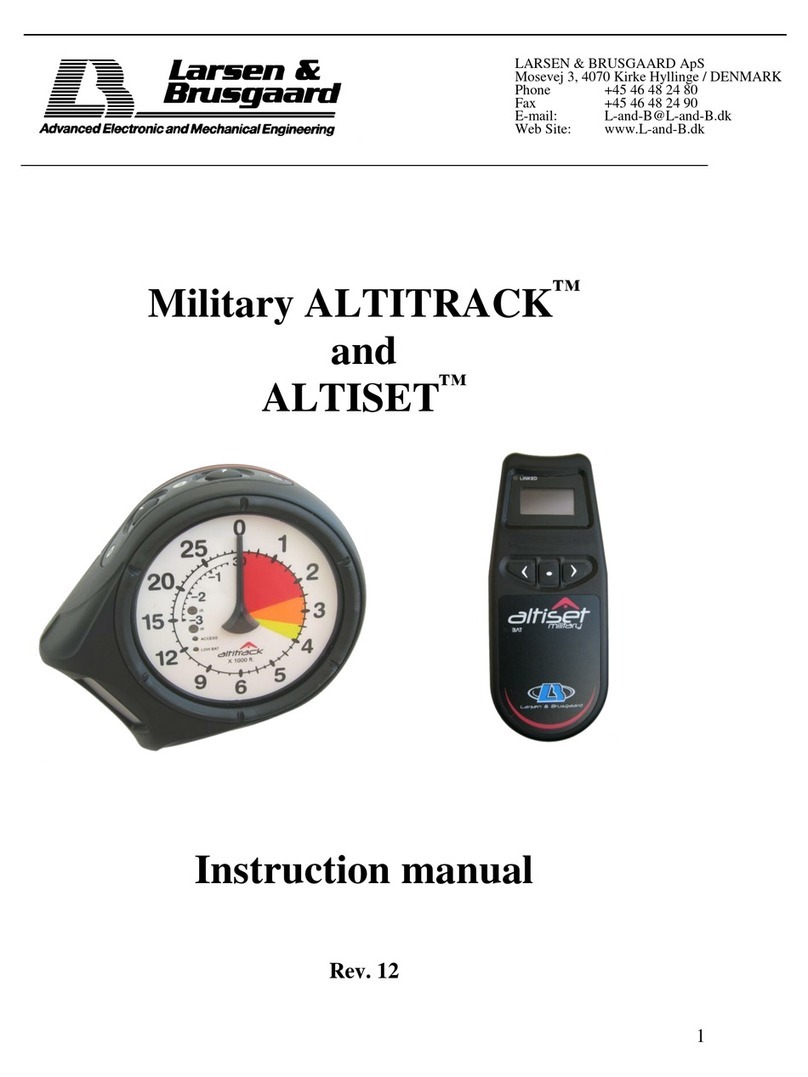
Larsen & Brusgaard
Larsen & Brusgaard Military ALTITRACK instruction manual
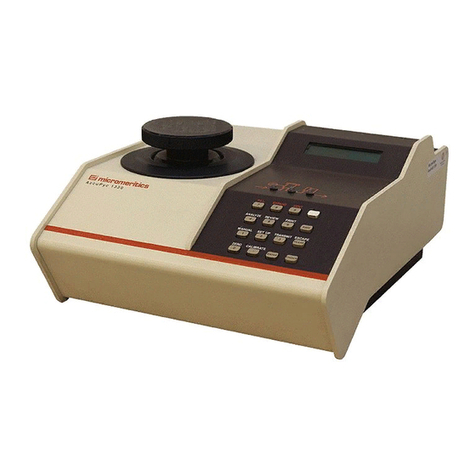
Micromeritics
Micromeritics AccuPyc 1330 Operator's manual

LaserLiner
LaserLiner AutoSmart-Laser instruction manual
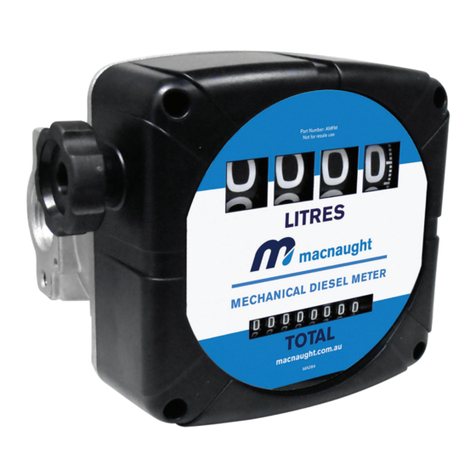
Macnaught
Macnaught AMFM instruction manual
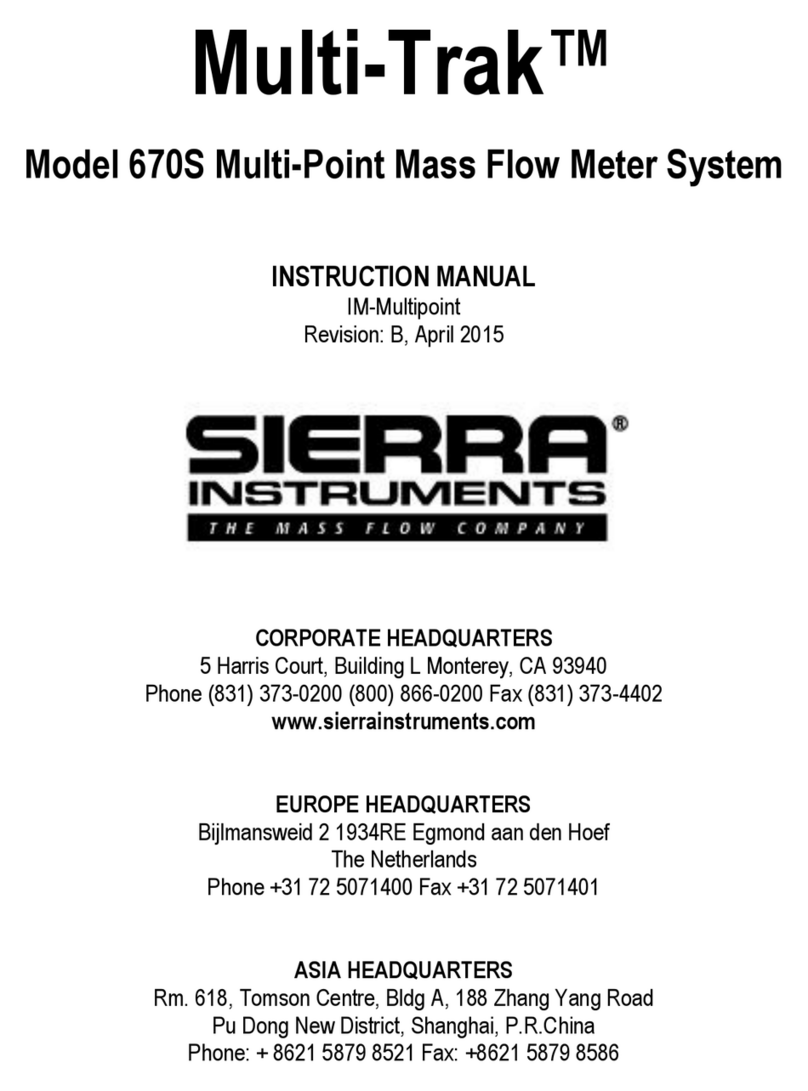
Sierra
Sierra Multi-Trak 670S instruction manual
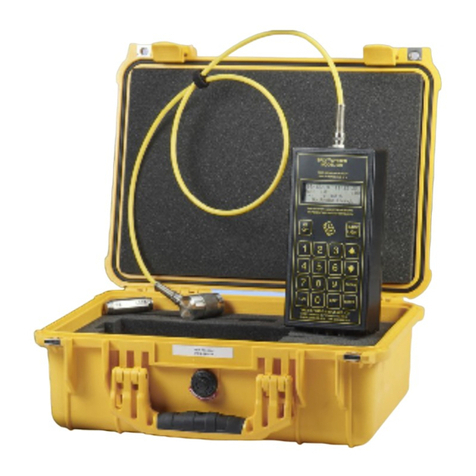
VALLEY FORGE & BOLT
VALLEY FORGE & BOLT SPC4 406A user manual
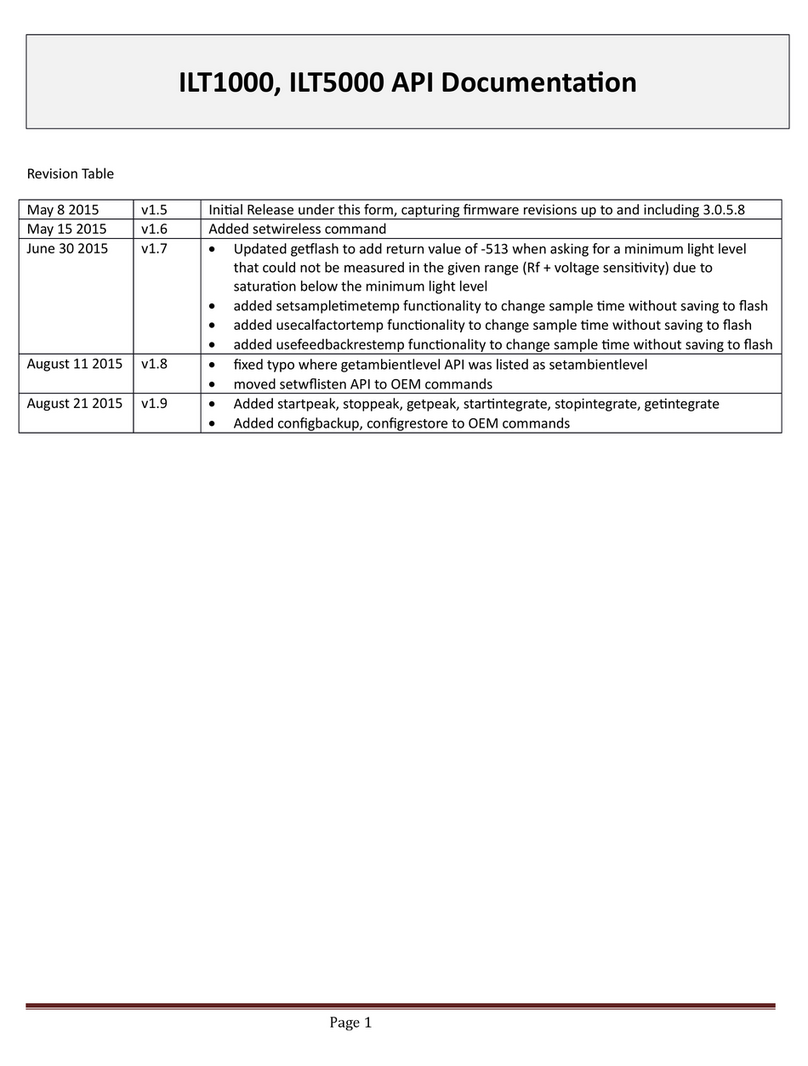
International Light Technologies
International Light Technologies ILT1000 API Manual

horiba
horiba D-72 instruction manual
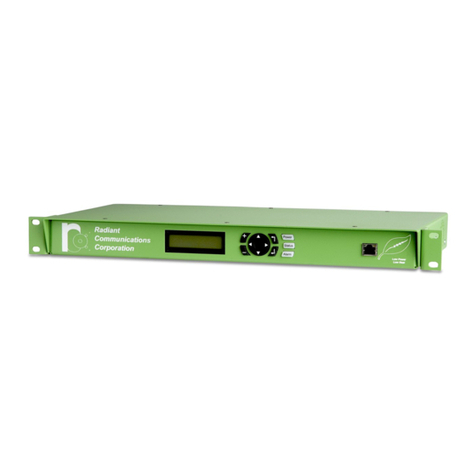
Radiant Communications
Radiant Communications RM1121 user manual
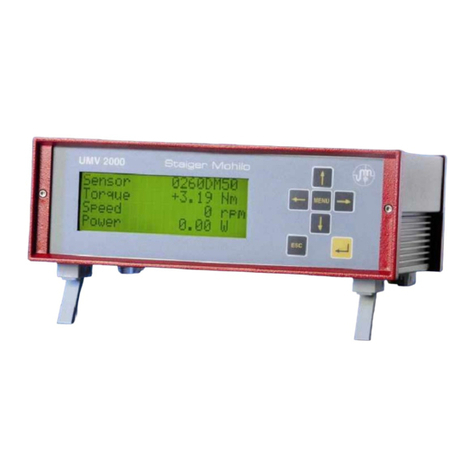
Dr. Staiger Mohilo
Dr. Staiger Mohilo UMV 2000 Operation manual
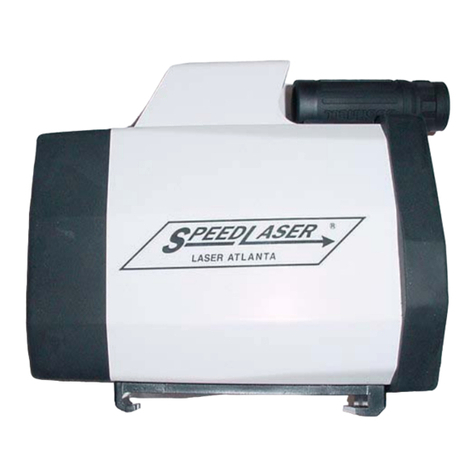
Laser Atlanta
Laser Atlanta SpeedLaser user guide

mru
mru 400GD user manual
